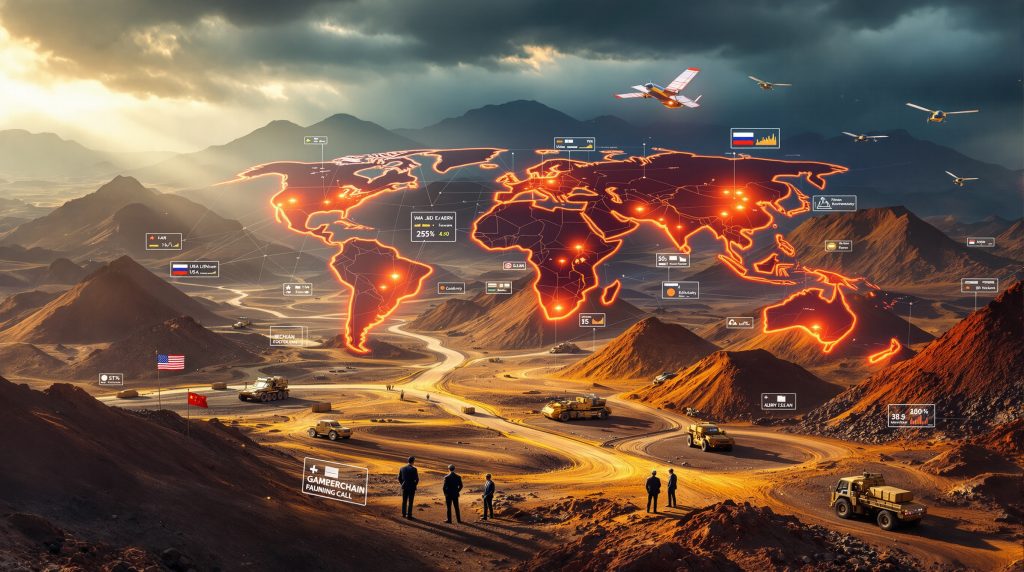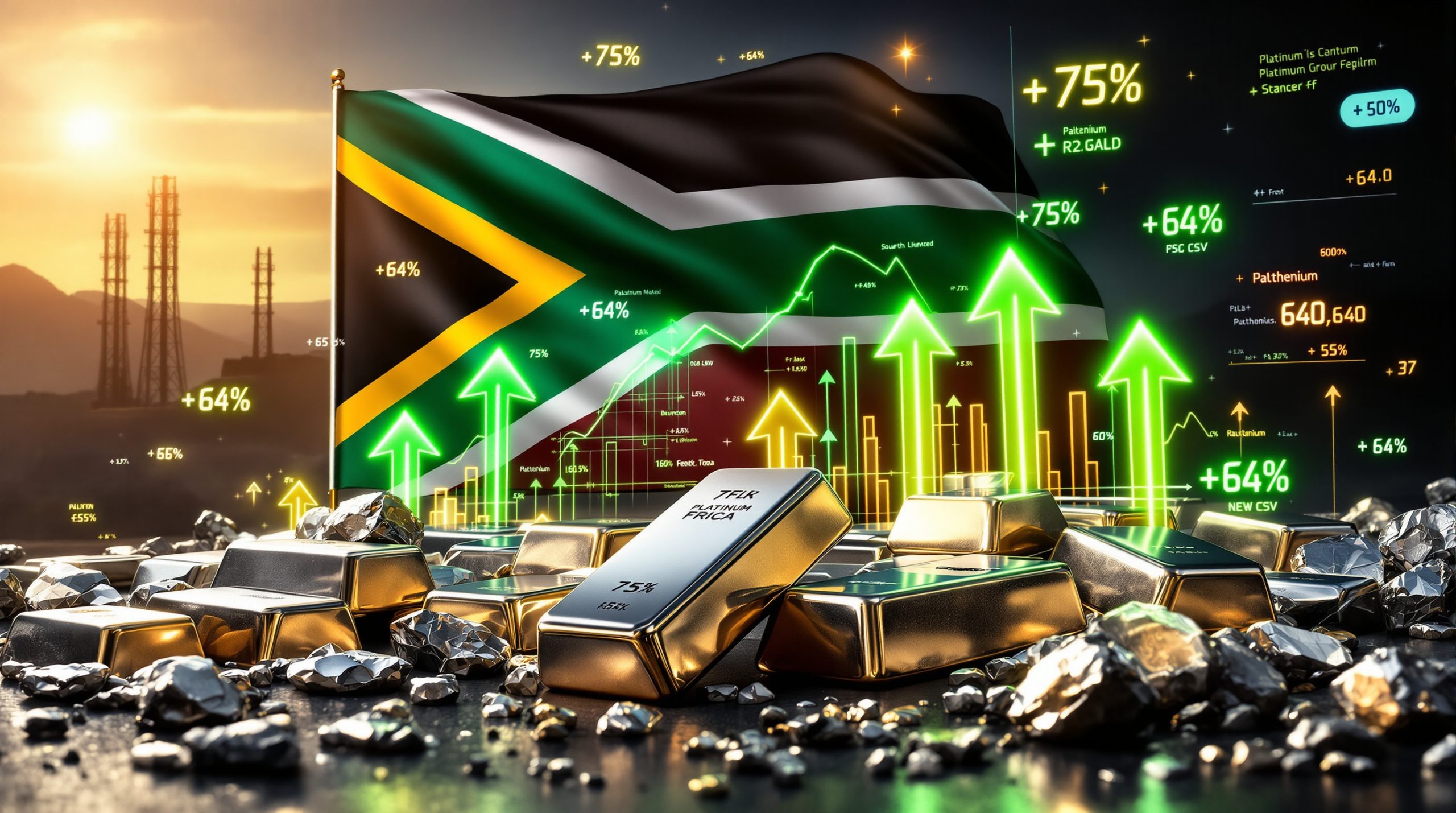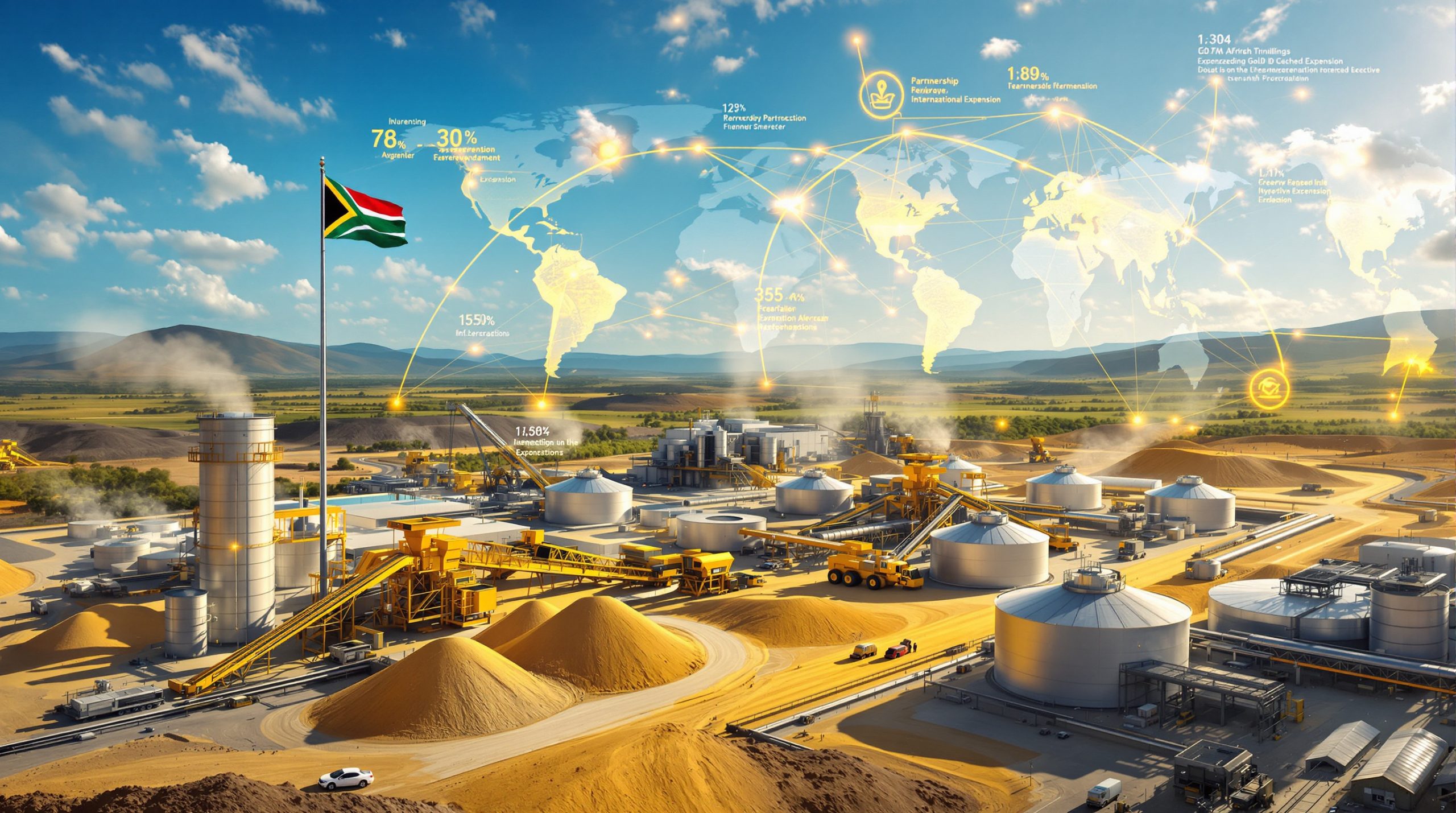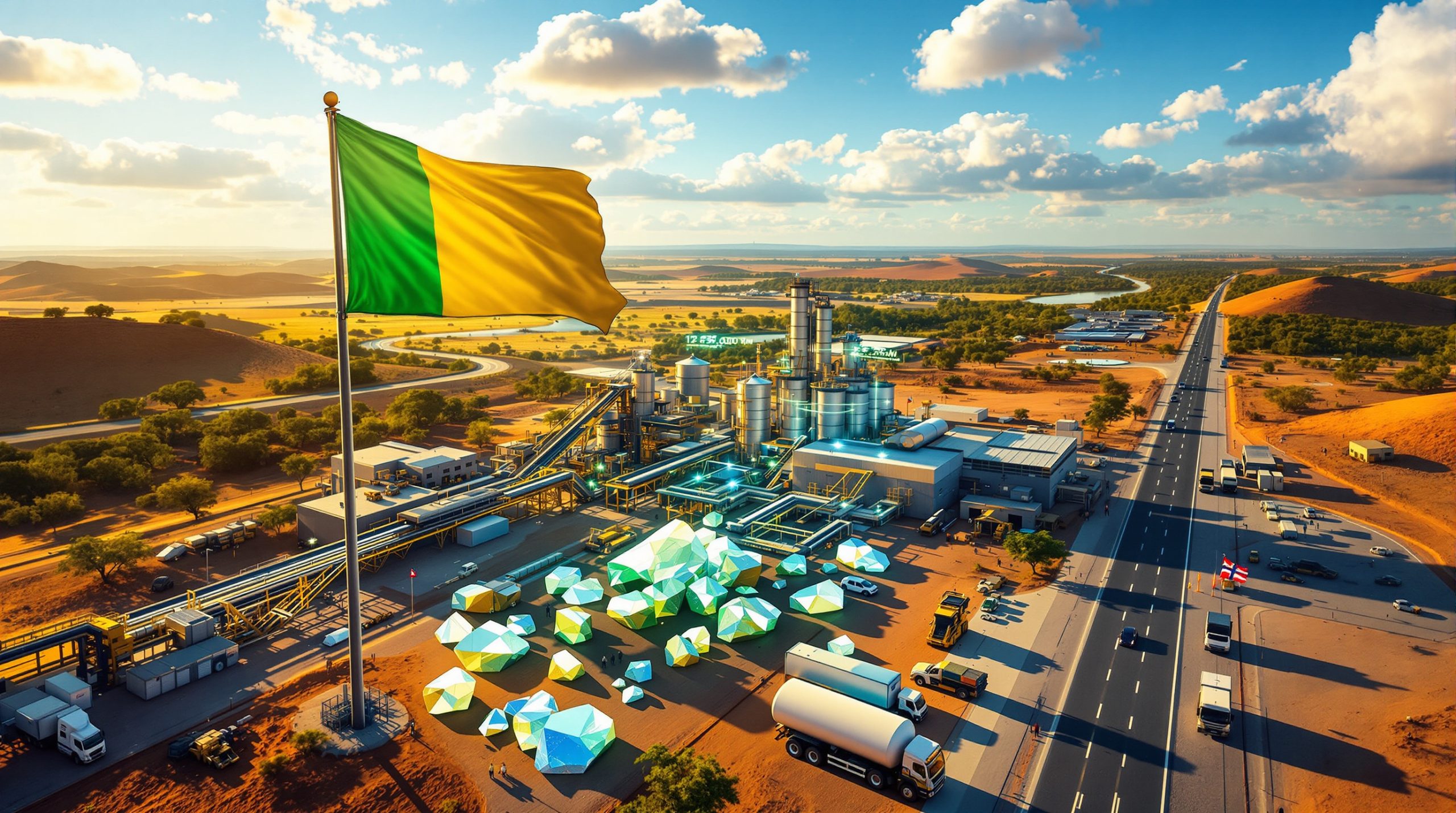Navigating Geopolitical Risks in the Mining Industry: A Comprehensive Analysis
The mining industry faces unprecedented challenges as geopolitical tensions intensify worldwide. Resource nationalism, great power competition, and supply chain disruptions are transforming how mining companies operate across borders. This shifting landscape requires mining executives to develop sophisticated risk management strategies to protect investments and ensure operational continuity.
The Evolving Nature of Geopolitical Risk in Mining
Resource nationalism has accelerated across multiple jurisdictions in recent years, with governments seeking greater control and economic benefits from their natural resources. Competition between major powers for critical minerals energy security has intensified, creating a complex web of geopolitical influences that mining companies must navigate. According to recent geopolitical research, industry leaders warn that "global uncertainties have become unprecedented" with competition for critical minerals entering "a high-intensity confrontation phase."
This volatile environment creates significant price fluctuations, as evidenced by copper prices increasing approximately 12% on the London Metal Exchange in 2025. The introduction of new trade barriers and export restrictions further complicates the operating environment for mining companies with international operations.
What Are the Primary Geopolitical Threats Facing Mining Companies?
Critical Mineral Competition Between Major Powers
Major nations are actively competing for control of mineral supply chains, recognizing their strategic importance for economic development and national security. The designation of certain materials as "critical minerals" by governments worldwide has elevated their importance in diplomatic and trade discussions.
The United States has expanded its critical minerals list to include copper, potash, and silicon, reflecting growing concerns about resource security. According to industry reports, the Trump administration has prioritized securing American control of resources globally through his Trump critical minerals order, including brokering peace deals to facilitate access to mineral-rich regions like the Democratic Republic of Congo.
This competition has financial implications, as demonstrated by Zijin Mining Group, which reported a 54% increase in first-half net income to 23.3 billion yuan ($3.3 billion) in 2025. As the world's third-largest metals miner by market value at over $80 billion, Zijin's performance reflects both the opportunities and challenges in the current geopolitical landscape.
Resource Nationalism and Regulatory Uncertainty
Host countries are implementing stricter ownership requirements and increasing royalty demands on foreign mining operations. These policy shifts often occur with limited notice, creating significant challenges for long-term planning and investment decisions.
Mining executives have identified "differences in politics, policies and laws among various countries and regions, as well as resource nationalism sentiments" as major challenges to construction and production operations. Companies operating in multiple jurisdictions must navigate varying regulatory frameworks that can change rapidly with political shifts.
Local content requirements have become more stringent and complex, requiring mining companies to develop sophisticated compliance systems and local supply chains. These requirements can significantly impact project economics and timelines, particularly for new developments.
Regional Conflict and Political Instability
Mining operations in conflict-prone regions face heightened security concerns that can disrupt production and endanger personnel. Democratic transitions, while potentially positive for long-term stability, often create regulatory uncertainty for existing projects during periods of political change.
Civil unrest can quickly disrupt supply chains and operational continuity, requiring robust contingency planning and security protocols. Border disputes affecting cross-border mineral transportation add another layer of complexity, particularly for projects that rely on infrastructure spanning multiple countries.
How Are Trade Policies Affecting Global Mining Operations?
Tariffs and Trade Restrictions
The implementation of new tariffs on key minerals has created market distortions and altered traditional trade flows. A notable example is the Trump tariffs impact on copper in 2025, which industry experts warned could "trigger market volatility in the short term as trade flows are reshaped."
These policy shifts force companies to develop alternative supply routes to mitigate tariff impacts, often at significant cost. The resulting price volatility as markets adjust to new trade barriers creates additional challenges for financial planning and risk management.
Export Controls and Strategic Minerals
Governments are increasingly implementing export restrictions on critical minerals to protect domestic industries and strategic interests. These controls often include processing requirements that force companies to invest in local refining capacity rather than exporting raw materials.
Strategic stockpiling programs by governments affect market availability and can distort pricing signals. Additionally, new certification requirements related to responsible sourcing add compliance costs and complexity to international mineral trade.
Which Mining Companies Are Most Exposed to Geopolitical Risks?
Case Study: Global Mining Leaders Navigating Political Challenges
Major diversified miners are implementing sophisticated political risk management strategies to protect their global operations. Only Rio Tinto Group and BHP Group rank higher than Zijin Mining in terms of market value among global metals miners, and all three face significant geopolitical challenges across their portfolios.
Geographic diversification has become a key strategy to mitigate country-specific risks, although this approach requires substantial capital and management resources. Strategic partnerships with local entities enhance political protection, particularly in regions with strong nationalist tendencies.
Engagement with multilateral organizations helps advocate for stable regulatory frameworks and provides a platform for addressing industry-wide challenges. These collective efforts can be more effective than individual company initiatives in influencing policy development.
Regional Risk Analysis: High-Exposure Mining Jurisdictions
African mining operations face evolving governance challenges, as demonstrated by Zijin Mining's experience with its substantial African copper and gold portfolio. Despite these challenges, Africa remains an attractive mining destination, with Zijin reporting significant growth in the region.
Latin American projects must navigate changing regulatory environments, often driven by political cycles and resource nationalism. Central Asian mines balance competing regional influences from Russia, China, and Western powers, creating complex operating environments.
Southeast Asian operations address maritime territorial disputes that can affect exploration rights and transportation routes. These disputes add another layer of complexity for mining companies operating in the region.
What Strategies Are Effective for Mitigating Geopolitical Mining Risks?
Corporate Risk Management Approaches
Leading mining companies are developing comprehensive geopolitical risk assessment frameworks that incorporate both quantitative and qualitative factors. These frameworks enable more informed decision-making and help prioritize risk mitigation efforts.
The integration of political risk analysis into investment decision processes has become standard practice for international mining companies. This integration ensures that geopolitical considerations are weighted appropriately alongside technical and financial factors.
Creation of dedicated geopolitical intelligence capabilities within corporate structures provides ongoing monitoring and analysis. Implementation of scenario planning for major political contingencies allows companies to develop response strategies before crises emerge.
Stakeholder Engagement and Social License
Building relationships with local communities serves as a critical risk mitigation strategy, providing a buffer against political pressures. Companies with strong local support often weather political transitions more successfully than those perceived as disconnected from community interests.
Multi-stakeholder partnerships enhance political resilience by creating a broader base of support and shared interests. Transparent engagement with host governments builds trust and can help prevent misunderstandings that might otherwise lead to conflict.
Creating shared value initiatives strengthens local support by demonstrating tangible benefits from mining operations. These initiatives help align company interests with community and national development goals.
Financial and Operational Hedging Strategies
Insurance products specifically designed for political risk coverage provide financial protection against government actions like expropriation or currency controls. Contractual protections including stabilization clauses and arbitration provisions offer legal recourse in case of adverse government actions.
Financial structures to mitigate currency and repatriation risks protect against sudden policy changes affecting capital movements. Operational redundancies ensure business continuity during disruptions, including alternative supply routes and processing options.
How Is Technology Changing Geopolitical Risk Management?
Digital Tools for Political Risk Assessment
Satellite monitoring enables early detection of regional instability through analysis of population movements, infrastructure changes, and environmental conditions. Social media analytics track sentiment and potential unrest, providing early warning of developing situations.
Predictive modeling for political risk forecasting combines multiple data sources to identify emerging threats. Blockchain applications enhance supply chain transparency and compliance, reducing risks related to material provenance and regulatory requirements.
Automation and Reduced Human Exposure
Autonomous mining technologies reduce personnel exposure in high-risk regions, limiting both security concerns and operational disruptions during political unrest. Remote operations centers enable management from stable jurisdictions, allowing technical expertise to be applied without physical presence in risky locations.
Digital twins facilitate contingency planning and crisis response by simulating different scenarios and testing response strategies. Cybersecurity measures protect against politically motivated attacks that might target critical infrastructure or sensitive data.
What Are the Economic Implications of Rising Geopolitical Tensions?
Impact on Mining Investment Flows
Capital is increasingly being reallocated toward politically stable jurisdictions, creating both challenges and opportunities for different mining regions. Risk premiums for projects in volatile regions are increasing, requiring higher projected returns to attract investment.
Extended timelines for investment recovery in uncertain environments affect project economics and financing structures. Strategic investors with government backing gain advantages through access to preferential financing and diplomatic support.
Commodity Price Effects and Market Volatility
Price premiums are emerging for materials from stable jurisdictions, reflecting lower risk profiles and more reliable supply chains. Supply disruptions cause periodic price spikes across key commodities, as seen in copper markets in 2025.
Stockpiling behaviors by both governments and companies amplify market movements, particularly during periods of heightened tension. The correlation between tariffs and investment impact on geopolitical events and commodity prices has strengthened, creating new challenges for price forecasting and risk management.
How Are Critical Minerals Becoming National Security Priorities?
Strategic Mineral Policies and National Security
Major economies have expanded their critical minerals lists, with the US recently adding copper, potash, and silicon to its inventory of strategically important materials. These designations typically lead to increased government support for domestic production and processing.
Government funding for domestic exploration and production has increased substantially, creating new opportunities for mining companies operating in politically stable jurisdictions. Public-private partnerships to develop secure supply chains combine government resources with industry expertise.
Defense procurement requirements are increasingly driving mineral demand for specific materials, creating more predictable markets but also additional compliance requirements. These requirements often include domestic content provisions that reshape supply chains.
Reshoring and Friend-Shoring Trends
Countries are developing domestic processing capabilities for strategic minerals to reduce dependence on potentially hostile foreign suppliers. This trend requires significant capital investment but creates new opportunities for integrated mining and processing operations.
Mineral alliances between geopolitically aligned nations are forming to create more resilient supply networks. The US uranium import ban exemplifies this trend, as Western nations work to reduce dependence on Russian materials. Investment incentives for projects in friendly jurisdictions help direct capital toward politically preferred regions.
Certification schemes for responsibly sourced materials are becoming increasingly important for market access, particularly in developed economies. These schemes address both environmental and social concerns as well as geopolitical considerations.
What Future Geopolitical Challenges Will Shape Mining?
Emerging Geopolitical Risk Factors
Climate policies are creating new forms of resource competition as countries race to secure materials needed for the energy transition. China's renewable energy and electrification investments have driven copper demand growth over 10% in recent periods, according to industry analysts.
Water scarcity is intensifying regional tensions around mining operations, particularly in arid regions where multiple users compete for limited resources. Energy transition is accelerating demand for critical minerals, creating both opportunities and challenges for mining companies.
Changing demographic patterns are affecting labor availability and social dynamics in mining regions, with implications for community relations and political stability. These shifts require new approaches to workforce development and community engagement.
Long-term Industry Adaptation Strategies
Mining companies are developing more flexible and resilient operational models that can adapt to changing geopolitical conditions. These models often include modular designs and phased development approaches that limit exposure to any single political risk.
The integration of geopolitical considerations into long-term planning has become essential for international mining companies. Industry-wide standards for responsible operations help address concerns that might otherwise trigger restrictive regulations.
Collaborative approaches to addressing shared geopolitical challenges are emerging through industry associations and multi-stakeholder initiatives. These collective efforts can be more effective than individual company actions in influencing the broader political environment.
FAQ: Geopolitical Risks in Mining
How do sanctions regimes affect mining operations?
Sanctions can severely restrict equipment procurement, financing options, and market access for mining operations. The complexity of international sanctions regimes often requires specialized legal expertise to navigate effectively, particularly when operations span multiple jurisdictions.
Companies must implement robust compliance programs to avoid violations that could result in severe penalties. Maintaining alternative supply chains for critical equipment and materials provides operational resilience during sanctions changes. Contingency plans for rapid sanctions changes are essential, particularly for companies operating in politically sensitive regions.
What insurance options exist for political risk in mining?
Mining companies can access political risk insurance through multilateral agencies, private insurers, and export credit agencies. These policies typically cover expropriation, currency inconvertibility, political violence, and contract frustration, providing financial protection against government actions.
Premiums vary significantly based on jurisdiction risk profiles and project characteristics, with higher costs for politically unstable regions. Coverage terms and exclusions must be carefully evaluated to ensure they address the specific risks facing each project.
How do community relations affect geopolitical risk profiles?
Strong community relationships provide critical protection during political transitions or unrest by creating local stakeholders with an interest in the mine's continued operation. Companies with robust social license to operate often face less pressure during nationalist policy shifts.
Community support during disputes with authorities can significantly improve outcomes for mining companies. Effective community engagement represents a fundamental geopolitical risk mitigation strategy that should be integrated into overall risk management approaches.
What role do international arbitration agreements play in risk management?
Bilateral investment treaties and arbitration clauses provide crucial protection against adverse government actions by establishing neutral forums for dispute resolution. These mechanisms enable companies to seek compensation for regulatory takings, discriminatory treatment, or contract violations.
The enforceability of arbitration awards varies significantly across jurisdictions, requiring careful structuring of corporate entities to maximize protection. Despite these limitations, arbitration provisions remain a cornerstone of political risk management for international mining companies.
Conclusion: Adapting to a New Geopolitical Reality in Mining
The mining industry operates at the intersection of geology, economics, and politics, making it particularly vulnerable to geopolitical shifts. As tensions intensify globally, mining companies must develop sophisticated approaches to managing geopolitical risks in mining industry while maintaining their social license to operate.
The unprecedented nature of current geopolitical challenges requires mining executives to prioritize flexibility, resilience, and strategic foresight. By integrating geopolitical analysis into core business processes and developing robust contingency plans, mining companies can protect their investments while contributing to the stable mineral supply chains essential for global economic development.
The most successful organizations will combine traditional risk management tools with innovative technologies and stakeholder engagement strategies to navigate this increasingly complex landscape. Those that fail to adapt to these new realities face significant risks to their operations, finances, and reputation in an increasingly volatile world.
Ready to Navigate Mining's Geopolitical Landscape More Effectively?
Discover potential high-impact opportunities in the mining sector with Discovery Alert's proprietary Discovery IQ model, which provides real-time notifications on significant ASX mineral discoveries, helping you stay ahead of market shifts caused by geopolitical factors. Explore how major mineral discoveries can lead to substantial market returns by visiting Discovery Alert's dedicated discoveries page.




